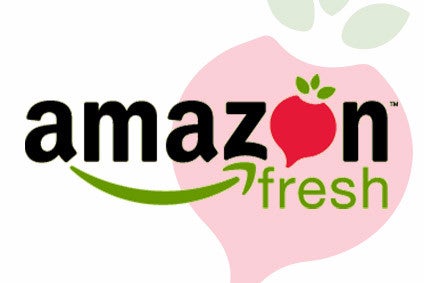
Amazon has launched its online grocery delivery business AmazonFresh in the UK, one of the most significant moves in the country’s food retail sector for a number of years. The introduction of AmazonFresh in the UK is a further sign of the online giant’s ambitions in grocery. Keith Anderson, vice president of strategy and insights at e-commerce consultants Profitero, reflects on what Amazon’s latest offensive could mean for the industry.
Following months of speculation, last week Amazon announced that it had launched AmazonFresh in the UK, heating up an already highly competitive grocery market.
The expansion of its Fresh service serves as reconfirmation of growing demand for convenience in grocery retailing, as well as of Amazon’s increasingly global commitment to selling food and consumables products.
It also introduces an important new competitive dynamic in the UK grocery market and increases the odds of further expansion, perhaps, for example, to Australia, as has been speculated.
Initially available to Prime members in 69 postcodes across central and east London, Amazon will deliver orders received by 1pm by 11pm the same day, within one-hour delivery slots. Grocery delivery will be available to Prime members for an additional monthly fee of GBP6.99, with free delivery on orders greater than GBP40.
Along with consumables-oriented offerings like Subscribe & Save, Pantry, the Dash replenishment service and Prime Now (which is also available in the UK), at a corporate level, Amazon views everyday essentials as central to its long-term strategy.

US Tariffs are shifting - will you react or anticipate?
Don’t let policy changes catch you off guard. Stay proactive with real-time data and expert analysis.
By GlobalDataA compelling opportunity for Amazon
Despite the challenging economics and operational complexity of online grocery, there are several factors that make Fresh a compelling investment for Amazon.
Amazon is a scale business, and no broad category of goods is larger scale than groceries and consumables. Amazon’s goal is to maximise wallet share among loyal Prime households, and the category is too big to ignore long-term.
Grocery and consumables products, though low-margin, are purchased at high frequency. Every page view yields Amazon revenue (through its display ad division), and every grocery order is an opportunity to sell higher-margin discretionary goods in other strategic categories like beauty, apparel, and toys.
By building local fulfillment centres and delivery networks to support online grocery, Amazon can offer superior selection and convenience compared to many competitors, defined both in terms of delivery speed (same-day) and precision (one-hour windows) – not only for groceries, but also non-food categories. Unlike in other AmazonFresh markets, the retailer appears in the UK not to be planning its own fleet of AmazonFresh-branded delivery trucks, instead leveraging its Amazon Logistics network of independent delivery drivers.
Still, with local logistics and high-frequency delivery routes, Amazon can adapt its highly successful marketplace model to local metro areas. Indeed, beyond its own offering, Amazon will deliver for 50 independent food retailers in London.
No online grocery model is an overnight success, and it will take years for Amazon’s position in the UK (and other markets) to stabilise. And in fact, AmazonFresh may be best understood as another value-added offering for loyal Prime members, as opposed to a ploy focused primarily on attracting new shoppers.
As it learns from customers, many elements of Amazon’s offer are likely subject to change, including its range and pricing strategy. Amazon is stubborn in its vision, but flexible on details.
What does AmazonFresh mean for competitors and suppliers?
Competitors will, of course, analyse selection, pricing, and other directly comparable factors like membership and delivery fees. Profitero will as well; look for assortment and price analyses from us soon.
But Amazon competes asymmetrically. It does things for customers that others cannot or will not do, re-setting customer expectations in the process. It wears a similar uniform, but it plays a different game.
Competing retailers must not underestimate Amazon’s open commitment to competing on low prices, selection, convenience, and experience. It may not set the bar on all competitive dimensions at once, but over time, it is likely to move swiftly and decisively.
Suppliers should participate, if at first only to learn to work with Amazon by doing.
Amazon’s approach to local online grocery will by necessity do away with the “endless aisle”, placing greater value on suppliers’ category and market expertise. There is less pressure on individual items to be economically viable than on Amazon’s traditional “national ship” platform. Forecasting and replenishing demand for an emerging online grocer can be notoriously challenging as well.
Discoverability in search results remains key, but the shopper dynamic of building a full basket of groceries increases the importance of placement in category listings, and the ease of re-ordering past purchases creates a virtuous cycle that favours brands that get in early.
Not least, Amazon will offer suppliers a panoply of paid marketing and merchandising vehicles. Suppliers should focus on performance and temper expectations.
These are early but interesting days in Amazon’s potential ascent to a position as an international powerhouse in grocery retailing.



